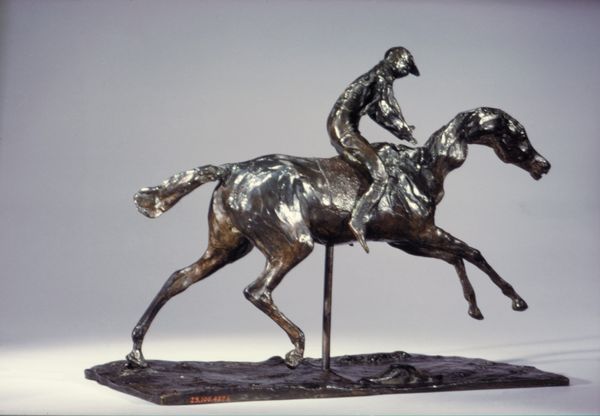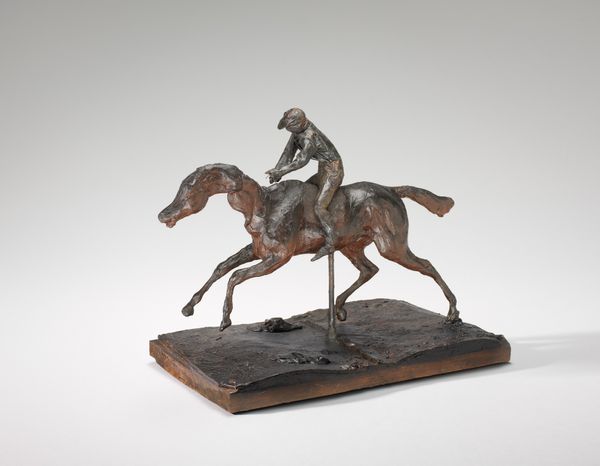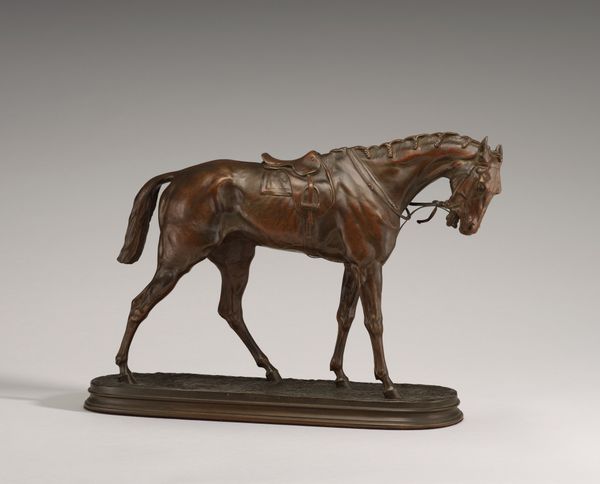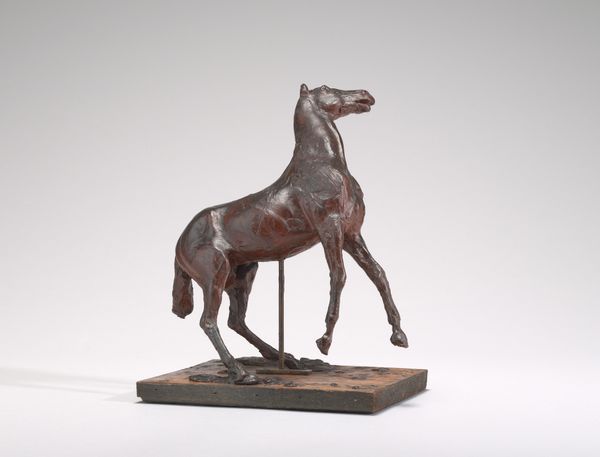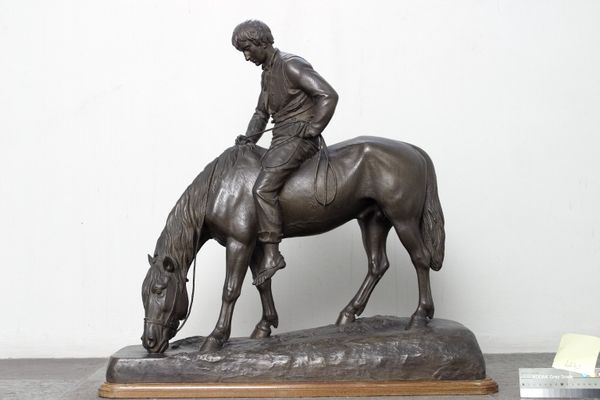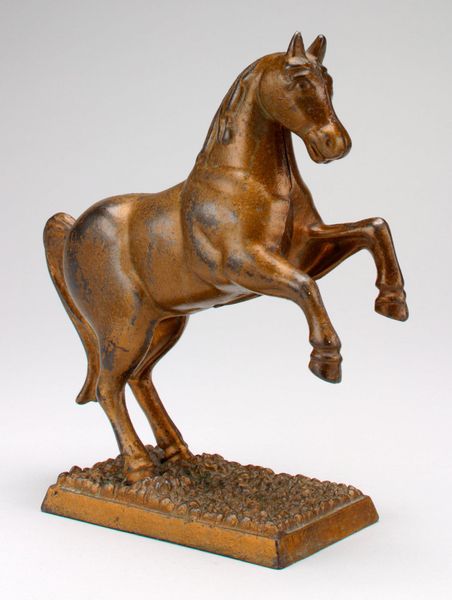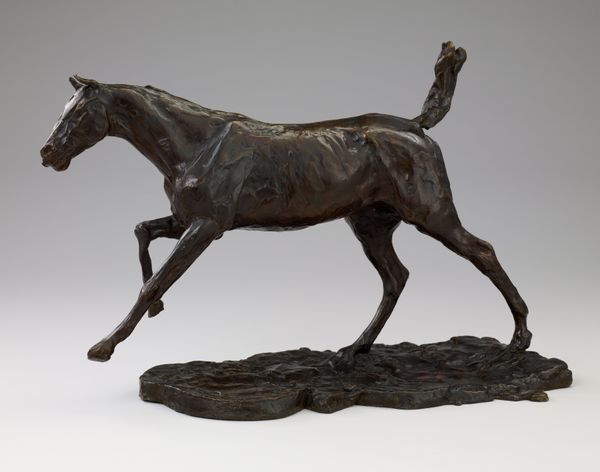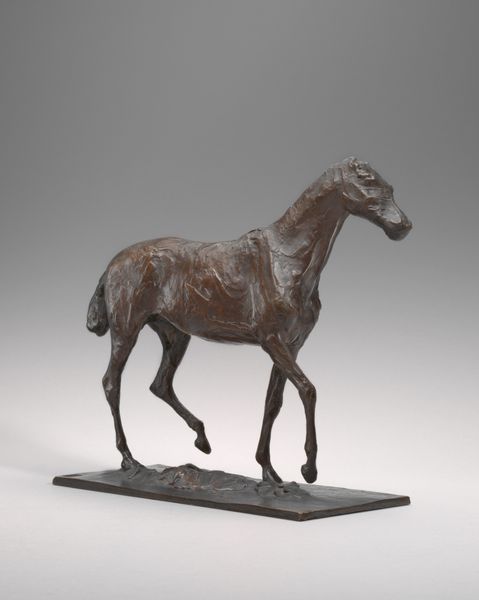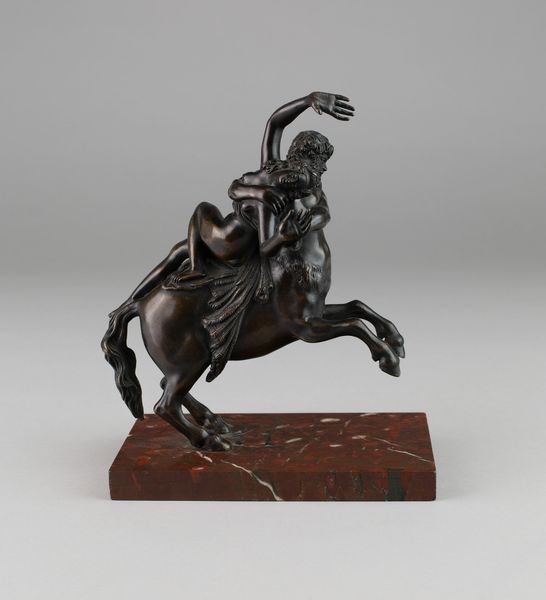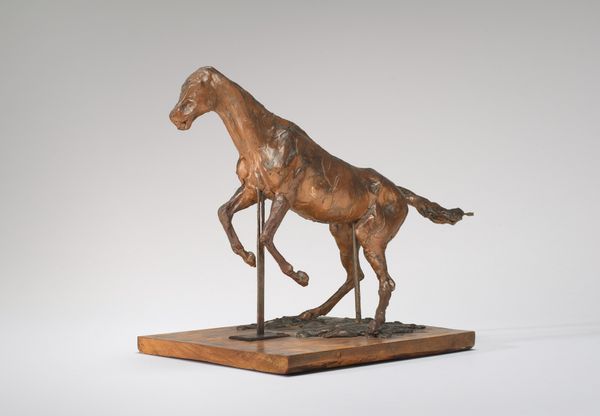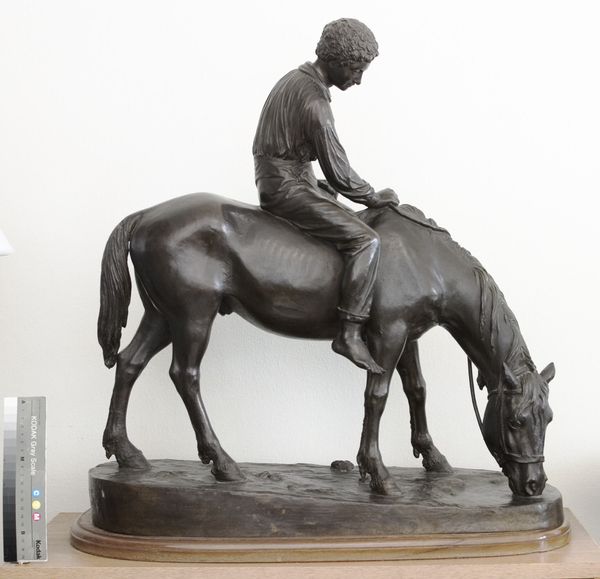
Dimensions: overall: 14.13 x 8.26 x 9.37 cm (5 9/16 x 3 1/4 x 3 11/16 in.)
Copyright: National Gallery of Art: CC0 1.0
Editor: Here we have Degas’s bronze sculpture, "Jockey with Cap," from the 1890s. The rough texture and dynamic pose give it such an incredible sense of energy. How do you see its formal elements contributing to its impact? Curator: The energy you perceive stems directly from Degas’s manipulation of form. Consider the imbalance – the jockey leans forward, urging the horse. The horse's legs, captured mid-stride, contribute to the sculpture's overall diagonal thrust. What does this deliberate asymmetry evoke for you? Editor: It feels unstable, like a snapshot of a fleeting moment, heightening the sense of speed. Does the material contribute? Curator: Precisely. The bronze, with its variegated patina, enhances the surface complexity. Observe the contrast between smooth, polished areas and the rougher, more textured parts. This contrast underscores the dynamism of the subject. Degas has achieved the affect through purely sculptural means, hasn’t he? Editor: Absolutely, I hadn't considered the patina and texture so much! So much implied motion achieved through purely formal choices. Curator: Indeed. By focusing on the internal relationships of line, mass, and surface, Degas transcends a mere representation of a jockey and horse, he achieves a statement about motion, speed, and imbalance through aesthetic construction alone. Editor: That’s a great reminder to look closer at form before jumping to symbolic interpretations. Thank you!
Comments
No comments
Be the first to comment and join the conversation on the ultimate creative platform.

